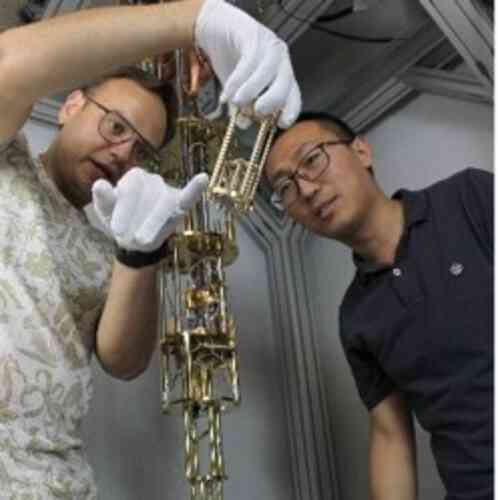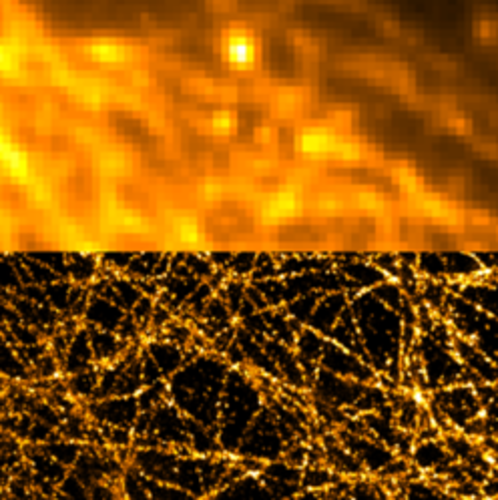ICFO decide game
Group 3 – Participant 4
Story cards
Read all the cards from this category, choose the one that looks more interesting to you and explain it to the rest of the group.
ISIDORA ISIBARNE
Story Card 2
I work for a company that designs and builds lasers: we make small ones, like the pointers you can buy in the neighborhood store, or industrial lasers that can accurately cut all kinds of material or even weld metals.
I really like my job because our products can meet the very different demands of our customers: there are some that need extreme precision to be able to manufacture the microcircuits that are inside our smartphones and tablets, and others that require high power to weld the components of a car or make incisions in pistons of aircraft engines in a precise and reproducible way to increase their efficiency.
photonics everywhere
alina anderson
Story Card 12
A few weeks ago I got the job of my dreams: I’m working at a maker space, where I can tinker with all the machines they have. I love the flexible structures that can be obtained by cutting wood: without the precision of lasers, they wouldn’t be so easy to do! I’m also fascinated by the new 3D printer: thanks to its laser, we can quickly reproduce plastic parts that makers on the other side of the world have designed. It’s almost like the teleporters of science fiction movies!
photonics everywhere
gerard grau
Story Card 15
This year I started the master's degree in Photonics in Barcelona. In one of the subjects, I discovered that photonics has a lot to do with my other passion: drones. If we fill these small planes with photonic sensors, we can get valuable information about places that would be difficult to reach. This makes drones not just fun toys, but important tools for studying the environment, searching for oil, gas, or mineral deposits, monitoring areas of natural disasters or crops.
information and cYberseCuriTY
info cards
Read all cards from this category, choose the two that look more interesting and explain them to the rest of the group.
graphene with a twist
Info Card 14
Graphene is a material of a single layer of atoms with incredible
properties: transparent, resistant, flexible and an optimal conductor of electricity and heat.
In 2018 it was discovered that two superimposed layers of graphene with a small rotation between them could transform this already interesting material in itself into a superconductor.
This was very important news for the scientific community and it even was published in the New York Times! It allows us to better understand the phenomena that take place in superconductors and potentially to design materials that conduct electricity without losses at room temperature, reducing the waste that takes place with current materials.
ICFO is one of the few laboratories in the world where it is possible to transform graphene into a superconductor.
Photo: Part of the ICFO team working on this project with the device that allows to observe the properties of graphene
photonics everywhere
shedding light on covid-19
Info Card 15
During the first big wave of the COVID-19 pandemic, an ICFO team worked intensively with a medical team at Parc Tauli Hospital near Barcelona to test a new idea: to evaluate with photonic devices microvascular dysfunctions in COVID-19 patients.
This could be a low-cost, non-invasive option for patients and easy to use for healthcare professionals to help establish the best treatment during the different phases of COVID-19 and help customize treatments. The project spread to different countries around the world and was even selected to be one of the 23 scientific projects funded by the European Union in the late summer of 2020 to deal with the pandemic.
Photo: ICFO scientists testing the equipment before sending it to hospitals
health
focusing on the smallest details
Info Card 17
While the quality of the cameras improves every day, there is always a detail in some photo that we can’t discern because there isn’t enough resolution. This problem is especially important for biologists who want to study cell structures, as there is a physical limit to the resolution of the images that can be obtained.
At ICFO there is a laboratory specializing in taking high-resolution photos and other advanced microscopy techniques that allow us to better understand the microscopic world and reveal the secrets of life.
Photo: Microtubules visualized with a conventional microscopy technique - top - and a super-resolution technique - bottom.
HEALTH
some of the coldest corners of the world
Info Card 20
ICFO has some of the coldest corners in the world, but no one can get in. There the temperature is lower than in deep space: only small fractions of a degree (hundreds of nanokelvins) above absolute zero.
Only a few laboratories in the world can reproduce these conditions in small vacuum chambers, where they can trap small quantities of atoms (from a few million to a single one, depending on the experiment): in order to be able to study the interesting quantum properties that appear at such low temperatures, it is fundamental that the atoms are as cold (and therefore as still) as possible.
(Foto: One of the ICFO laboratories where they cool atoms close to absolute zero.)
photonics everywhere
thinking cards
Read all the cards from this category, choose the one that looks more interesting to you and explain it to the rest of the group.
diversity
Thinking Card 1
If we asked you to draw a scientist, how would you represent it? This experiment has been done many times and very often people imagine a middle-aged white man. This is due to the stereotypes that have been spread among society for centuries, but it is also true that there is a problem of representation of minorities in science (as there also is in many other sectors of society).
This is not only a matter of social justice: science would benefit greatly from more diversity because it is a creative and collaborative process. How can we successfully foster diversity in science?
peer review
Thinking Card 6
Unlike radio or TV talk shows, in science not all opinions have the same value. Only if you can support your thesis with experimental evidence and logical reasoning your discovery will be accepted by the scientific community.
Therefore, journals publishing scientific results use the principle of peer review: a new result can only be published if it is accepted by a group of experts in that field who carefully examine the methods and conclusions of that research.
Does it make sense to adopt this system or does it slow down the flow of useful new knowledge that should be shared quickly, such as new discoveries about the SARS-CoV-2 virus?
DECISIon
The time and resources available to solve important problems affecting society are limited. Imagine being part of the commission that has to decide how to invest the money for photonics research at European level for the coming years: knowing that photonics benefits society in many different ways, how would you distribute funds among the different research fields in photonics?
This is not an individual decision: each group must come to a unanimous conclusion by discussing correctly and rationally based on the facts that you have learned so far. There is no right or wrong answer. Like many things in life, it depends on the point of view you assume, the priorities you set, ...
light for health
Option 1
The pandemic that arose in 2020 taught us that public health is an important sector that affects many more aspects of society. A tiny virus can affect the lives of millions of people in all its aspects, not only health, but also the economy, industrial structure, labor market ...
That’s why it’s important to focus most of our efforts on research projects that can improve and care for people’s health.
light for information and cybersecurity
Option 2
We live in the information age. More and more companies and institutions are collecting and analyzing large amounts of data to improve industrial processes and services for the population. In addition, digital technologies are essential to communicate with each other, whether for work or fun. If information systems fail, strategic structures such as energy networks, traffic control, hospitals, governments, etc. fail, too. Thus, ensuring data security for quick and massive data transfer is of fundamental importance for a digitized society like ours.
That is why it is important to focus most of our efforts on research projects that can improve data collection, analysis, transmission and security.
light for energy and the environment
Option 3
We are in the middle of a climate emergency: to be able to solve it we need new environmental policies and the commitment of society as a whole. Science and technology can accelerate the change of paradigm that we need to save the planet with discoveries and innovative technologies. If we do nothing now, the Earth will be uninhabitable and unsustainable, but there’s still time.
That’s why it’s important to focus most of our efforts on research projects that can help us take care of our planet.
photonics everywhere
Option 4
Photonics is everywhere and has a positive impact in many different aspects of our lives. Sometimes, the same technology (such as the laser) can improve health, information and care for the environment at the same time. There are many global issues and it is difficult to set a priority, especially because they are interconnected.
That’s why it’s important not to focus our efforts on a single field of application: it’s better to diversify our efforts to have more chances of success.














